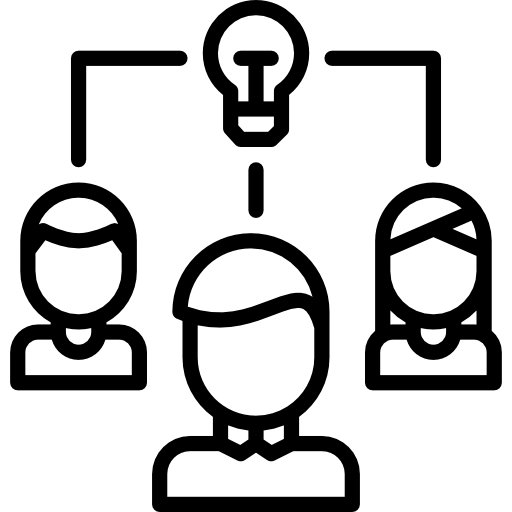ICFO decide game
Group 1 – Participant 4
Story cards
Read all the cards from this category, choose the one that looks more interesting to you and explain it to the rest of the group.
david díaz
Story Card 1
I'm an accountant and I'm very interested in science. That's why I often watch TV shows about technology. A few weeks ago, I saw Prof. Lluis Torner, director of ICFO, explaining that a smartphone uses things that have earned more than 20 Nobel photonic prizes, which make cameras, sensors, screens possible, as well as the technology used to manufacture microcircuits and many of their components, and to make the Internet possible. Who would have guessed that I had so much photonics in my pocket!
information and cYberseCurity
pere puig
Story Card 7
I like to feel safe when driving, so I'm happy with any safety innovation. For example, I'm thrilled to have infrared light sensors in my new car that help me park and alert me when a car gets too close, avoiding scares and even some accidents!
In a few years, I hope to be able to buy a self-driving car that drives me around: finally I’ll be more calm and relaxed when I’m stuck in traffic, because the car will do all the work. Much of the obstacle detection work will be done by infrared photon pulses, maybe even detected by graphene cameras!
information and cybersecurity
manuel moreno
Story Card 10
In the small town where I live, the City Council has installed photonic sensors: the collected data will help them take informed decisions in the future. For example, they installed a network of sensors to monitor air and water pollution with open data systems, so that citizens can be informed about the environmental health.
They are also working to connect the entire population to the internet network, installing optical fiber networks in all neighborhoods of the city. There are still many thing to do, but little by little we are transforming our town into a smart city!
information and cYberseCuriTY
info cards
Read all cards from this category, choose the two that look more interesting and explain them to the rest of the group.
detection of microorganisms in water
Info Card 7
We are used to going to the beach without worrying about illnesses, because there are entities such as the Catalan Water Agency (ACA - its acronym in Catalan) that monitor the water along the beaches, ensuring the safety of bathers. Thanks to photonics, on-site analysis within a few hours will soon be possible, significantly reducing waiting times for detecting the presence of harmful microorganisms.
For this reason, the ACA has agreed with ICFO to develop this technology to monitor the state of the Catalan beaches. This same technology could also be applied in the field of food safety and other industrial sectors.
energy and environment
multicolor 3d printing
Info Card 13
Digital manufacturing is one of the key innovations of the fourth industrial revolution we are experiencing. The ability to print 3D objects has opened up countless new possibilities on both the small scale of makers and startups, and the industrial scale.
One of the most interesting techniques to quickly obtain complex objects is sintering, but it has the important limitation that it can only create black or gray objects.
A recent technology developed at ICFO allows different colors to be added to this 3D printing technique, opening the door to new potential applications and the possibility of integrating artistic and aesthetic design into digital manufacturing.
photonics everywhere
towards a quantum internet
Info Card 16
New emergent quantum technologies are promising to revolutionize the world of information and communications: to make the most of this potential, the European Union is planning to build an infrastructure for quantum communications, which would connect quantum devices, becoming a quantum internet. This infrastructure will take advantage of the current optical fiber network for short and medium distance connections and will combine with satellites to cover the longest distances. Thus, thanks to quantum physics, the most sensitive data such as personal, financial, governmental as well as the electricity grid, air control, or healthcare system will be protected.
Photo: Clouds of cold atoms inside one of the ICFO laboratories
information and cYbersecurity
improving our perception of the world
Info Card 24
The small changes that light undergoes when crossing different materials can help us measure with high accuracy many characteristics of the world around us, such as distance and temperature.
At ICFO we work to obtain very resistant sensors to measure temperature and electric fields in extreme conditions, such as a fire.
We also investigate how to build ultra-sensitive sensors thanks to the properties of quantum physics, such as a scale that can detect the presence of just one atom with carbon nanotubes or cold atoms that could measure the small magnetic fields generated by our brain.
Photo: Prototype of an ultrasensitive quantum magnetic field sensor.
information and cybersecurity
thinking cards
Read all the cards from this category, choose the one that looks more interesting to you and explain it to the rest of the group.
fake news
Thinking Card 7
In order to express critical opinions about the news that we receive through the media outlets, advertising, social media... and avoid falling into scams or misunderstandings, it is important to keep up-to-date about the latest news in science and technology. Sometimes, however, the information comes from pseudoscientific sources of dubious reliability.
How do we handle this often questionable flow of information?
diversity
Thinking Card 1
If we asked you to draw a scientist, how would you represent it? This experiment has been done many times and very often people imagine a middle-aged white man. This is due to the stereotypes that have been spread among society for centuries, but it is also true that there is a problem of representation of minorities in science (as there also is in many other sectors of society).
This is not only a matter of social justice: science would benefit greatly from more diversity because it is a creative and collaborative process. How can we successfully foster diversity in science?
DECISIon
The time and resources available to solve important problems affecting society are limited. Imagine being part of the commission that has to decide how to invest the money for photonics research at European level for the coming years: knowing that photonics benefits society in many different ways, how would you distribute funds among the different research fields in photonics?
This is not an individual decision: each group must come to a unanimous conclusion by discussing correctly and rationally based on the facts that you have learned so far. There is no right or wrong answer. Like many things in life, it depends on the point of view you assume, the priorities you set, ...
light for health
Option 1
The pandemic that arose in 2020 taught us that public health is an important sector that affects many more aspects of society. A tiny virus can affect the lives of millions of people in all its aspects, not only health, but also the economy, industrial structure, labor market ...
That’s why it’s important to focus most of our efforts on research projects that can improve and care for people’s health.
light for information and cybersecurity
Option 2
We live in the information age. More and more companies and institutions are collecting and analyzing large amounts of data to improve industrial processes and services for the population. In addition, digital technologies are essential to communicate with each other, whether for work or fun. If information systems fail, strategic structures such as energy networks, traffic control, hospitals, governments, etc. fail, too. Thus, ensuring data security for quick and massive data transfer is of fundamental importance for a digitized society like ours.
That is why it is important to focus most of our efforts on research projects that can improve data collection, analysis, transmission and security.
light for energy and the environment
Option 3
We are in the middle of a climate emergency: to be able to solve it we need new environmental policies and the commitment of society as a whole. Science and technology can accelerate the change of paradigm that we need to save the planet with discoveries and innovative technologies. If we do nothing now, the Earth will be uninhabitable and unsustainable, but there’s still time.
That’s why it’s important to focus most of our efforts on research projects that can help us take care of our planet.
photonics everywhere
Option 4
Photonics is everywhere and has a positive impact in many different aspects of our lives. Sometimes, the same technology (such as the laser) can improve health, information and care for the environment at the same time. There are many global issues and it is difficult to set a priority, especially because they are interconnected.
That’s why it’s important not to focus our efforts on a single field of application: it’s better to diversify our efforts to have more chances of success.














